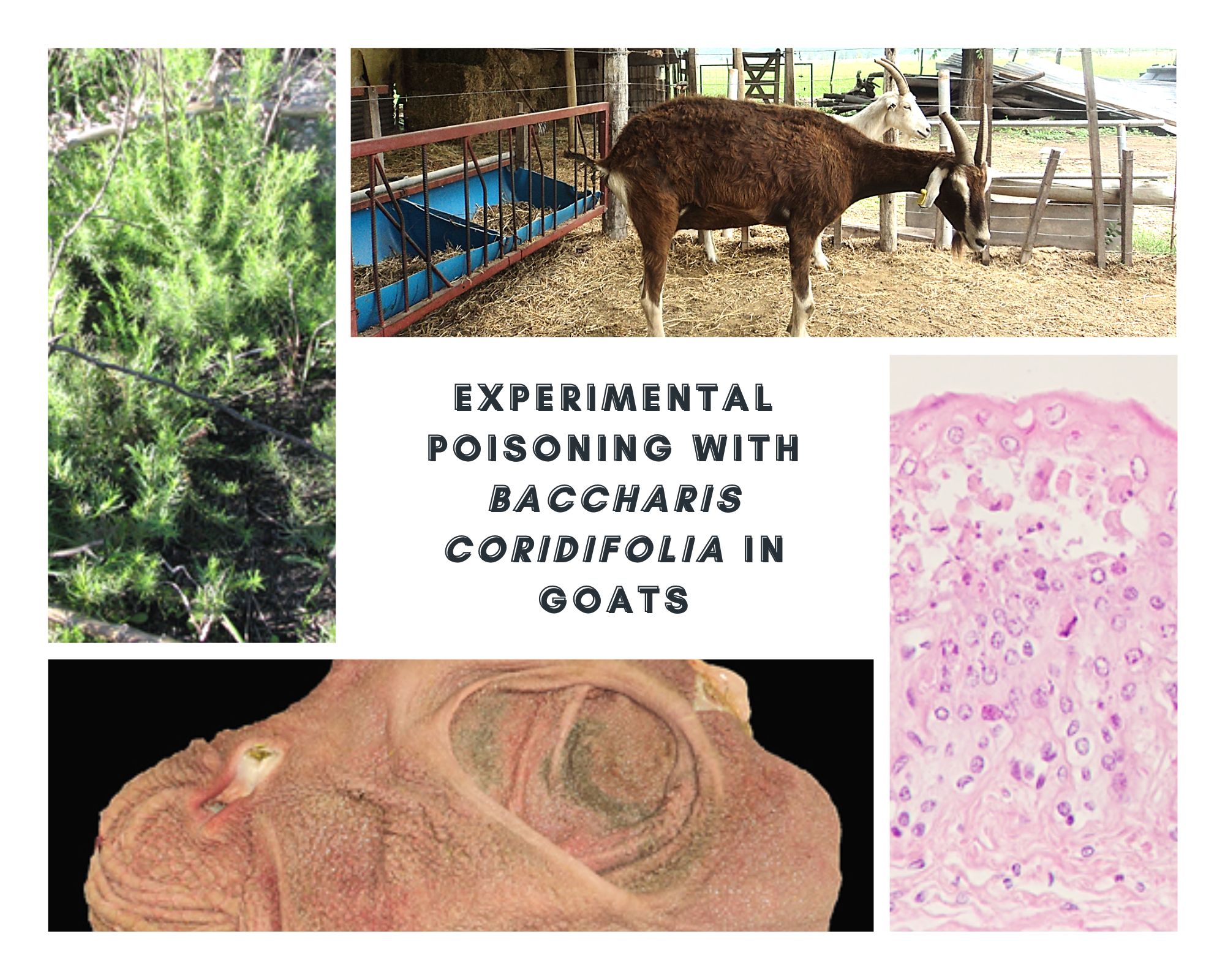Experimental Poisoning with Baccharis coridifolia (Asteraceae) in Goats
Palabras clave:
Digestive disorder, Prestomachs, Small ruminants, Toxic plantsResumen
This work aimed to experimentally reproduce Baccharis coridifolia poisoning in goats. Eight adult Saanen goats were divided into two groups, four received an oral dose of 5 g/kg live weight of dried and ground plant and the rest of them were used as a control group. The animals were inspected every 2 hours and the observed clinical signs were restlessness, anorexia, tachycardia, tachypnea, muscle spasms, colic, mild tympanism, ruminal atony, and death. The main macroscopic alterations were observed in the digestive system, consisting of edema and diffuse congestion of the mucosa of all pre-stomachs, abomasum, and intestines. Histopathological examination revealed especially degeneration, coagulative necrosis, ulceration, and detachment of the epithelium from both the rumen and reticulum. B. coridifolia is one of the most important toxic plants in Argentina. Although many species are known to be susceptible, studies on this subject are scarce in goats, which gives this work a greater relevance.
Descargas

Publicado
Cómo citar
Número
Sección
Licencia

Esta obra está bajo una licencia internacional Creative Commons Atribución-NoComercial-CompartirIgual 4.0.















